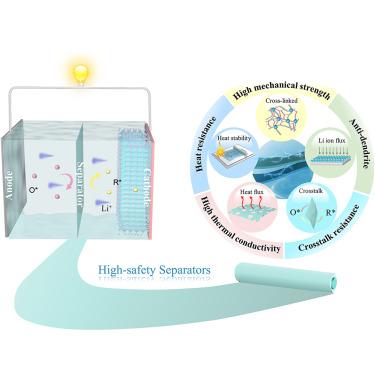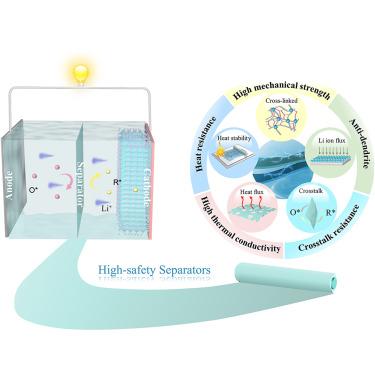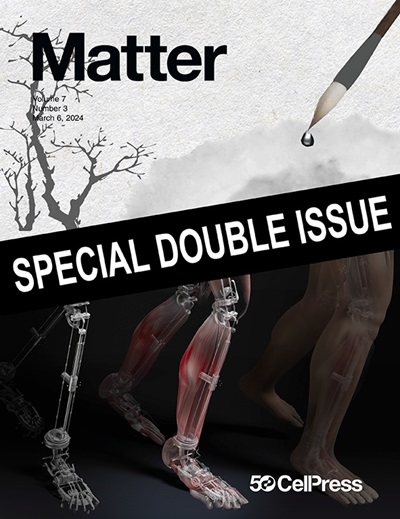从实验室到工业:用于锂离子/金属电池的高安全性分离器
IF 17.5
1区 材料科学
Q1 MATERIALS SCIENCE, MULTIDISCIPLINARY
引用次数: 0
摘要
可充电锂离子电池和锂金属电池取得了显著进展,但电池事故频发,亟待关注。这种分离器既是电极之间的电屏障,也是离子传输介质,从根本上控制着离子动力学、速率性能,最重要的是,控制着电池的安全性。因此,开发能够确保电池持续安全运行的功能性隔膜至关重要。本文系统总结了锂离子和锂金属电池高安全性分离器的最新进展,从实验室研究到工业应用。详细讨论了化学串扰和内部短路等各种安全问题。强调了高安全性分离器的关键性能要求,包括机械强度、导热性、耐热性、抗枝晶性能和抗串扰性。还讨论了工业准备过程和相关挑战,强调了学术界和工业界密切合作的重要性。最后,我们提出了发展高安全性分离器的主要挑战和未来前景。本文章由计算机程序翻译,如有差异,请以英文原文为准。


From lab to industry: High-safety separators for lithium-ion/-metal batteries
Rechargeable lithium-ion and lithium-metal batteries have achieved remarkable progress, yet frequent battery accidents demand urgent attention. The separator, which acts as both an electrical barrier and an ion transport medium between electrodes, fundamentally governs ionic kinetics, rate performance, and, most importantly, battery safety. Developing functional separators that ensure continuous and safe battery operation is therefore critical. This review systematically summarizes recent progress in high-safety separators for lithium-ion and lithium-metal batteries, spanning from laboratory research to industrial applications. Various safety concerns—chemical crosstalk and internal short circuits—are discussed in detail. Key performance requirements for high-safety separators, including mechanical strength, thermal conductivity, heat resistance, anti-dendrite properties, and crosstalk resistance, are highlighted. The industrial preparation processes and the associated challenges are also discussed, with an emphasis on the importance of close collaboration between academia and industry. Finally, we present the key challenges and future perspectives for the development of high-safety separators.
求助全文
通过发布文献求助,成功后即可免费获取论文全文。
去求助
来源期刊

Matter
MATERIALS SCIENCE, MULTIDISCIPLINARY-
CiteScore
26.30
自引率
2.60%
发文量
367
期刊介绍:
Matter, a monthly journal affiliated with Cell, spans the broad field of materials science from nano to macro levels,covering fundamentals to applications. Embracing groundbreaking technologies,it includes full-length research articles,reviews, perspectives,previews, opinions, personnel stories, and general editorial content.
Matter aims to be the primary resource for researchers in academia and industry, inspiring the next generation of materials scientists.
 求助内容:
求助内容: 应助结果提醒方式:
应助结果提醒方式:


